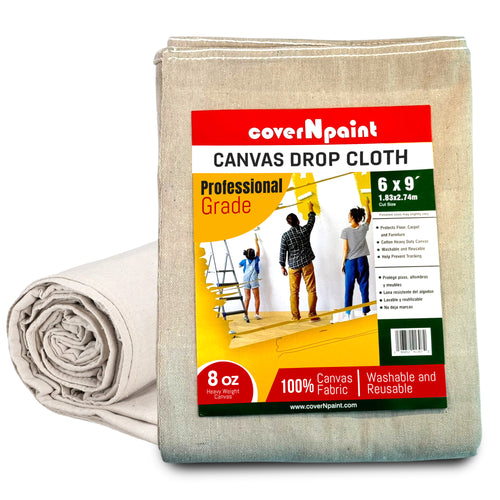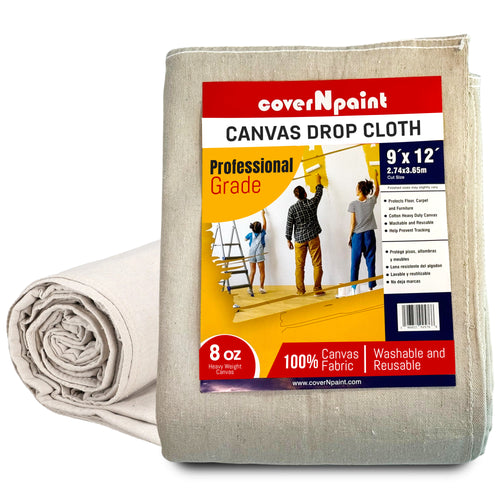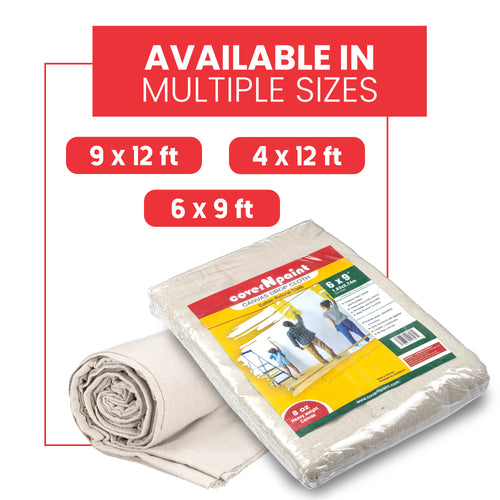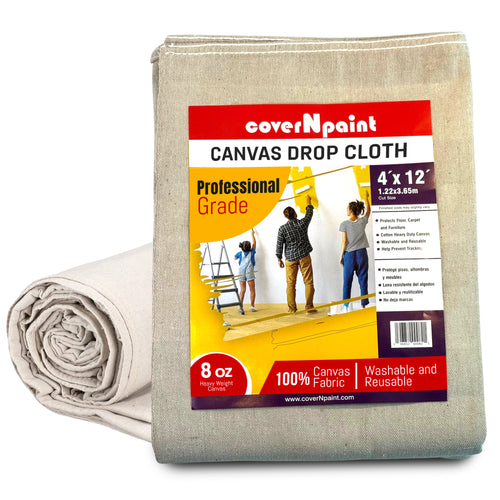When starting a painting project, one of the most overlooked but important decisions is choosing the right surface protection. Should you use paint tarps or go with traditional drop cloths? Both serve the same purpose—protecting floors, furniture, and surfaces from spills and splatters—but their materials, durability, and usage vary significantly.
This guide will help you understand the differences between paint tarps and drop cloths, their advantages and disadvantages, and which one is best suited for your needs.
What Are Paint Tarps?
Paint tarps are large sheets made from plastic, polyethylene, or sometimes lightweight canvas blends. They are widely used in DIY painting projects because of their affordability and easy availability.
Key Features Of Paint Tarps:
-
Waterproof barrier: Prevents paint from seeping through.
-
Lightweight: Easy to fold and carry.
-
Disposable or semi-reusable: Often used once or twice.
-
Low cost: Suitable for quick, budget-friendly projects.
Paint tarps are most effective for short-term use or for homeowners who want to protect a space temporarily. However, they can tear easily and may become slippery underfoot.
What Are Drop Cloths?
Drop cloths, particularly canvas drop cloths, are heavy-duty coverings designed for professional and long-term use. They are made from tightly woven cotton or canvas fabric that absorbs paint instead of letting it pool on the surface.
Key Features Of Drop Cloths:
-
Durability: Withstands repeated use for years.
-
Absorbency: Prevents spills from spreading.
-
Washable and reusable: Eco-friendly compared to plastic tarps.
-
Non-slip surface: Safer for walking and working.
Professional painters and serious DIYers often prefer paint drop cloths because of their longevity, safety, and performance.
Paint Tarps Vs Drop Cloths: Side-By-Side Comparison
|
Feature |
Paint Tarps |
Drop Cloths (Canvas) |
|
Material |
Plastic or polyethylene |
Cotton/canvas fabric |
|
Durability |
Low – can tear easily |
High – withstands years of use |
|
Absorbency |
None – paint pools on surface |
High – absorbs drips and spills |
|
Reusability |
Limited |
Reusable, washable |
|
Safety |
Slippery, tear-prone |
Non-slip, stable |
|
Cost |
Cheap, short-term solution |
Higher upfront cost but long-term savings |
|
Best For |
Quick DIY or one-off projects |
Professionals and frequent painters |
Advantages Of Paint Tarps
-
Budget-friendly: Perfect for quick, low-cost protection.
-
Waterproof: Blocks liquid paint from seeping through.
-
Lightweight: Easy to carry and dispose of.
When To Use Paint Tarps:
-
Small DIY projects.
-
Temporary furniture coverage.
-
Protecting outdoor areas during short tasks.
Advantages Of Drop Cloths
-
Durable and reusable: Ideal for long-term use.
-
Safer to walk on: Reduces risks of slipping.
-
Eco-friendly: Replaces multiple disposable tarps.
-
Professional quality: Trusted by painters for decades.
When To Use Drop Cloths:
-
Professional painting jobs.
-
Indoor projects require safety and stability.
-
Eco-conscious users wanting reusable options.
Safety Considerations
Safety is often overlooked when choosing between tarps and drop cloths. Plastic paint tarps can become slippery, creating hazards during painting. On the other hand, canvas drop cloths provide traction, reducing accidents.
For detailed guidance on preventing risks, explore our in-depth resource: Painters Drop Cloth Safety Guide: Preventing Slips, Trips, and Falls.
Cost Vs Value: Which Is Better?
-
Paint Tarps: Cheaper upfront, but often disposable, leading to higher costs over multiple projects.
-
Drop Cloths: Higher initial investment, but washable and reusable, saving money long-term.
For professionals or frequent DIYers, canvas drop cloths provide better value. For occasional painters, paint tarps may be enough.
Environmental Impact
Plastic tarps contribute to waste and environmental pollution. In contrast, canvas drop cloths are reusable and biodegradable, making them a more eco-friendly choice.
With increasing awareness of sustainability, more painters are switching to reusable materials rather than disposable plastics.
Choosing The Right Option For Your Project
-
For small, quick jobs: Paint tarps are sufficient.
-
For large, recurring projects: Drop cloths are the better choice.
-
For safety and eco-friendliness: Canvas drop cloths win.
The best choice depends on your budget, project size, and how often you paint.
A Curiosity-Building Note
Most painters assume that choosing between paint tarps and drop cloths is only about cost. In reality, small details like absorbency, safety, and reusability can change the entire painting experience. coverNpaint USA continues to share expert insights that surprise both DIYers and professionals—helping them get the most value and safety out of their painting tools.
FAQs
Q1: Are paint tarps reusable?
Yes, but only a few times. They are more prone to tearing compared to canvas drop cloths.
Q2: Why are canvas drop cloths preferred by professionals?
They are durable, absorbent, washable, and provide a safer, non-slip surface.
Q3: Are paint tarps waterproof?
Yes, they are fully waterproof, but paint tends to pool on the surface instead of being absorbed.
Q4: Do drop cloths save money long term?
Yes. While the upfront cost is higher, their reusability and durability make them more economical.
Q5: Which is safer to use indoors?
Canvas drop cloths are safer as they provide traction, reducing the risk of slips.













